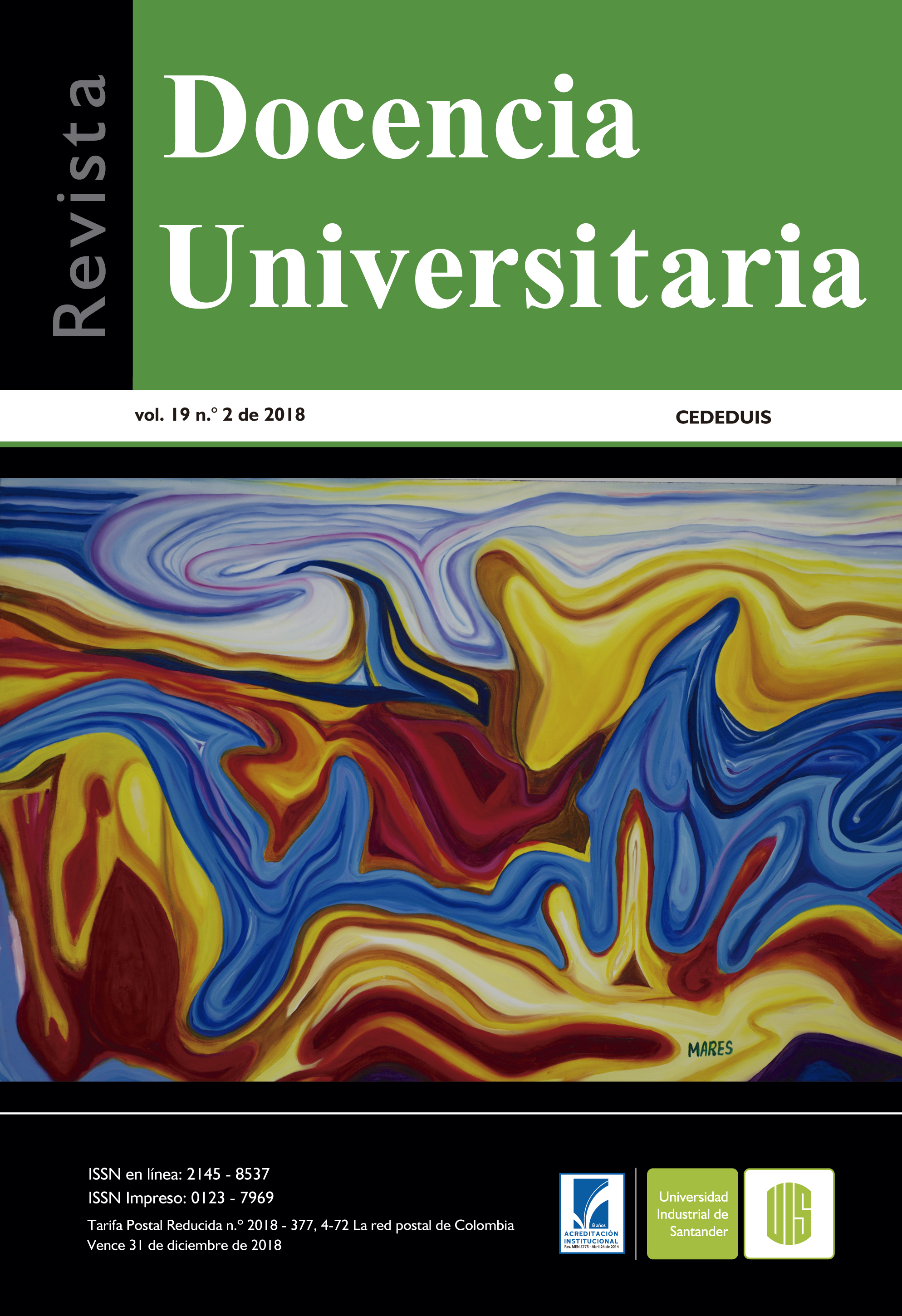Pedagogic strategies of processes in health, the basic cardiopulmonary reanimation by a virtual learning environment
Published 2018-12-28
Keywords
- Virtual education,
- health,
- multimedia method,
- learning strategy
How to Cite
Abstract
Coronary disease is the first cause of death around the world. The most serious manifestation of this complaint is sudden death, which main treatment is cardiopulmonary reanimation. Therefore, a pedagogic strategy was developed based on the construction of a virtual learning environment focused on health processes such as basic cardiopulmonary reanimation in adults through a descriptive study with a qualitative approach along with the design and the implementation of different strategies like assessments, data entry, and multimedia content. The virtual tool was developed using the active scripting language Visual Basic Script Edition of Microsoft office, the software After effects CC was used for video editing, Adobe Illustrator and Photoshop CC were used for image editing, and sound editing was made using Audicity 2.2.2. The implementation of communication and information technologies (CIT) facilitates learning, teaching and divulgation in the heath field. Additionally, it benefits the student training in the execution of an effective basic cardiopulmonary reanimation.
Downloads
References
Berg, R. A., Hemphill, R., Abella, B.S., et al. (2010) Part 5: adult basic life support: 2010 American Heart Association Guidelines for Cardiopulmonary Resuscitation and Emergency Cardiovascular Care. Circulation, 122:S685.
Brouwer, T. F., Walker, R.G., Chapman, F.W. & Koster, R.W. (2015). Association Between Chest Compression Interruptions and Clinical Outcomes of Ventricular Fibrillation Out-of-Hospital Cardiac Arrest. Circulation, 132:1030.
Cheskes, S., Schmicker, R. H., Christenson, J., et al. (2011). Perishock pause: an independent predictor of survival from out-of-hospital shockable cardiac arrest. Circulation; 124:58.
Cordero, I. (2017). La enseñanza de la reanimación cardiopulmonar y cerebral. CorSalud, 9(4), 279-281. Recuperado de http://scielo. sld.cu/pdf/cs/v9n4/cs11417.pdf
Gahan, K., Studnek, J. R., & Vandeventer, S. (2011). King LT-D use by urban basic life support first responders as the primary airway device for out-of-hospital cardiac arrest. Resuscitation 82(12), 1525-8. Recuperado de https://doi.org/10.1016/j. resuscitation.2011.06.036
Gallagher EJ, Lombardi G, Gennis P. (1995) Effectiveness of bystander cardiopulmonary resuscitation and survival following out-ofhospital cardiac arrest. JAMA, 274:1922.
Gwak, D. (2010). The meaning and predict of Smart Learning, Smart Learning Korea Proceeding, Korean e-Learning Industry Association.
Kellum MJ, Kennedy KW, Barney R, et al.(2008) Cardiocerebral resuscitation improves neurologically intact survival of patients with out-of-hospital cardiac arrest. Ann Emerg Med, 52:244.
Kleinman ME, Brennan EE, Goldberger ZD, et al. (2015) Part 5: Adult Basic Life Support and Cardiopulmonary Resuscitation Quality: 2015 American Heart Association Guidelines Update for Cardiopulmonary Resuscitation and Emergency Cardiovascular Care. Circulation, 132:S414.
Olasveengen, T., de Caen, A., Mancini, M., Maconochie, L., Aickin, R., & Berg, R. (2017). International Consensus on Cardiopulmonary Resuscitation and Emergency Cardiovascular Care Science With Treatment Recommendations Summary. Resuscitation, 121, 201-214. Recuperado de https://doi. org/10.1016/j.resuscitation.2017.10.021
Rojas, L., Aizman, A., Arab, J., Utili, F., & Andresen, M. (2012). Reanimación cardiopulmonar básica: conocimiento teórico, desempeño práctico y efectividad de las maniobras en médicos generales. Revista Médica de Chile, 140(1), 73-7. Recuperado de http://dx.doi.org/10.4067/S0034-98872012000100010
Salinas, J., y Marín, V. (2014). Pasado, presente y futuro del microlearning como estrategia para el desarrollo profesional. Campus Virtuales, 3(2), 46-61.
Schäfer, M., & Kranzlmüller, P. (2007). RTfM! Teach yourself Culture in Open Source Software Projects. En hug, T. (ed.). Didactics of Microlearning. Concepts, discourses and Examples, 324-340. Münster (gE): Waxmann.

